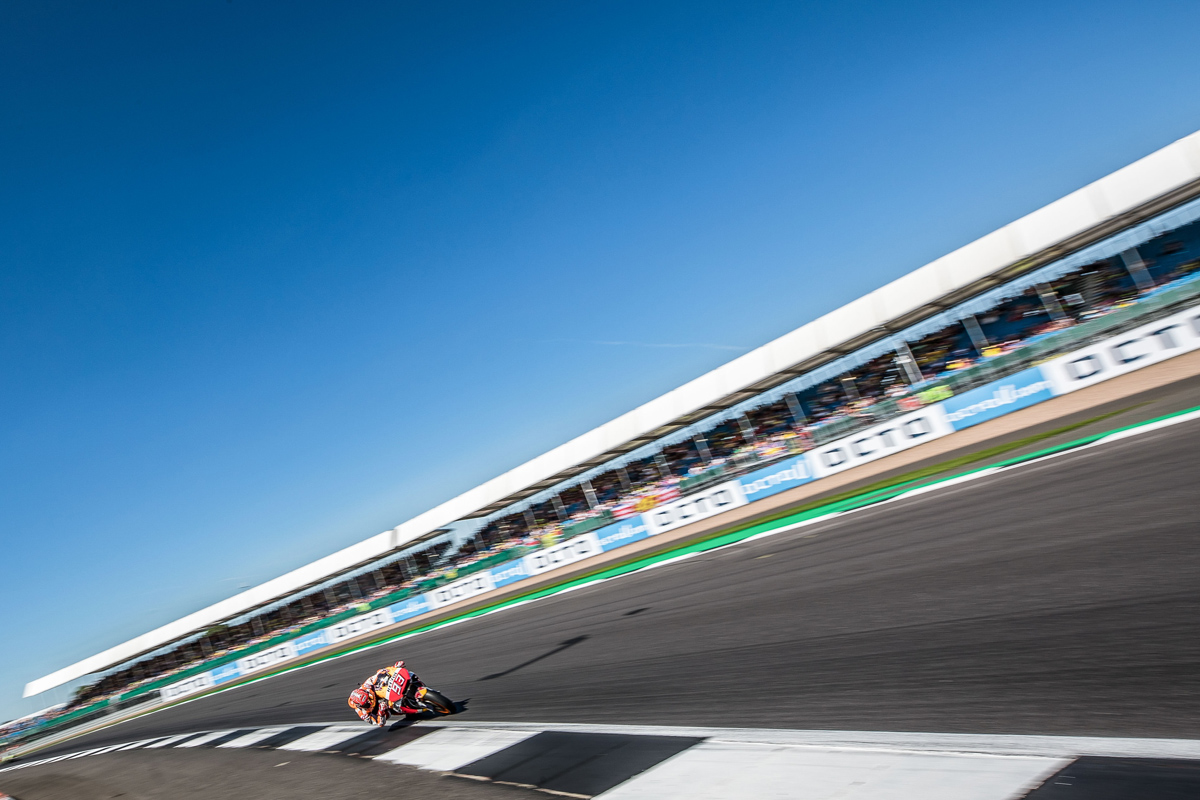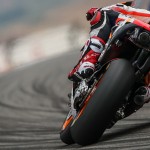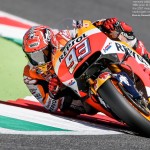We had a glorious day at Silverstone. There was so very much to enjoy. Andrea Dovizioso rode another magnificent race to take victory, his intelligence winning the day. Maverick Viñales came within a whisker of the spoils, the Movistar Yamaha rider clearly having found his mojo again. Valentino Rossi led for much of the race, and was the favourite to triumph for a long while. Marc Marquez’ RC213V engine blew up rather spectacularly, just as he was about to launch his assault on the lead. The top three finished within a second, Cal Crutchlow only having abandoned his charge in the final laps.
In addition to that, we had a tight Moto2 race, and the usual insanity in Moto3, complete with red flag. The sun shone, the vendor and entertainment areas were packed with fun things to do, and all was well with the world. Even Valentino Rossi was impressed: “I think we have to enjoy a little bit this weather condition because is a big surprise. Arrive in Silverstone with the MotoGP with these temperatures, no wind, completely dry is great fun.” So why were there 17,000 fewer fans at Silverstone than last year, when the weather was a good deal less appealing?
There are lots of possible explanations. The race was held on a Bank Holiday weekend, so perhaps families decided to head to the countryside or seaside instead of a race. The race was originally to be organized by the Circuit of Wales, but the uncertainty and final collapse of that project when it failed to obtain funding may have persuaded people to change their plans, from fear of the race being cancelled. Perhaps the switch to pay-per-view television is taking its toll, with far fewer people watching the BT Sports broadcast in the UK than had seen the BBC coverage. (The evidence from Spain and Italy contradicts that: spectator numbers there are higher than in previous years, despite similar precipitate declines in TV audience figures on pay-per-view.) Maybe it was just simple economics: at £90 per adult and £45 for kids under 15, taking a family of four to Silverstone would set you back the best part of £300. And that’s before taking travel and accommodation into account. As wages start to decline in the UK, families may be starting to choose their discretionary spending a little more carefully.
While there is merit in all of these theories, and each of these factors may have played a role, there is perhaps a simpler explanation. Crowd numbers are compiled and released by the circuit owners, or the event organisers. There is no way of independently verifying the numbers provided by the organizers, as most circuits are operated by private companies, and releasing the numbers is done as a courtesy to Dorna, rather than any legal requirement. Most of the photographers I spoke to – always keen observers of detail – seemed to think that the stands looked as busy in previous years. The paddock felt busy, though some said it was less packed than normal. There was certainly a lot less traffic on the way into the circuit, though that could because the race was scheduled for much later than usual to avoid the clash with F1. The changes to the A43 around Towcester may have helped too.

The question is whether these numbers are even accurate. There could be lots of reasons why the management of a circuit decides to either inflate or downplay quantities. Perhaps the Circuit of Wales had been artificially boosting figures to persuade the Welsh Government to invest in the project. Perhaps Silverstone artificially deflated the numbers to put themselves into a stronger bargaining position with Dorna for next year, to help them negotiate a lower sanctioning fee. Perhaps the numbers were accurate, and this was just a fluke of circumstance, and next year the crowd numbers will be back around the 70,000 mark.
Whatever the facts at Silverstone, the British Grand Prix is neither unique, nor even particular egregious in the way it handles numbers. The best example is still Jerez, where crowds halved from one year to the next. According to the official figures published by Dorna, in 2015, 243,000 people attended Jerez over the three days of the event, with a crowd of 122,500 on race day. The following year, those numbers had been slashed in half: 120,000 fans turned up over all three days, with just 63,500 on the Sunday. The funny thing is that photographers swore blind there were just as many people at the track the year before, and the traffic on the way into the track felt just as busy as any other year I had been.
Where did the change come from? In 2016, the mayor of Jerez was interviewed on the grid, live on Spanish TV, expressing her pleasure at seeing so many fans at the track, and quoting the much lower crowd numbers. Dorna had no choice but to publish the figures the mayor had mentioned. Whether there were 120,000 fans in Jerez or 60,000 that day, Dorna were constrained by circumstance in the numbers they could publish.
As a result of that incident, and the numbers surrounding a couple of other races, I have learned to treat official attendance numbers with a pinch of salt. We don’t know whether the crowd numbers are solely ticket sales to paying customers, or whether team and Dorna guests are included. We don’t know whether the numbers are produced as a result of painstaking calculation, educated guesswork, or sheer fantasy for political or tax purposes. What I do know is that the racing at Silverstone was awesome. And if fewer people turned up than last year, then more fool them. Anyone who didn’t come missed out. We are in a golden era of MotoGP, so let’s enjoy it for as long as we can.
Photos by CormacGP/Polarity Photo








